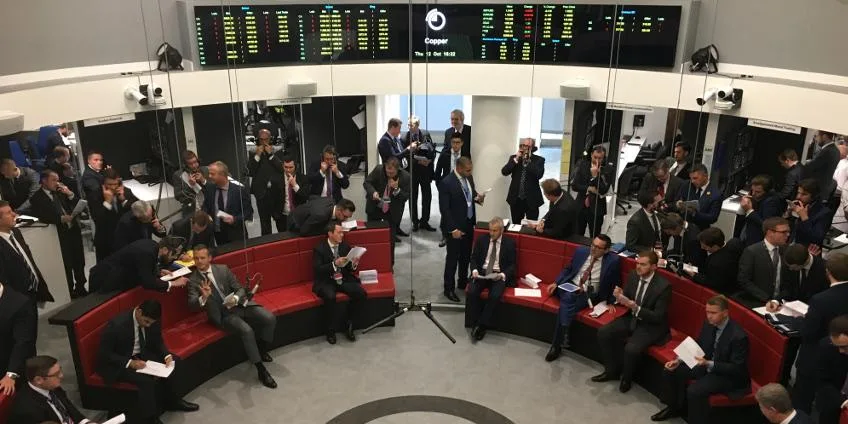How to Choose LME System Software for Efficient Metal Trading: A Comprehensive Guide
4 min read
In the fast-paced world of metal trading, selecting the right LME (London Metal Exchange) system software is crucial for achieving efficiency and accuracy. With various options available, it can be challenging to determine which software best meets your needs. This comprehensive guide will walk you through the essential factors to consider, helping you make an informed decision to enhance your metal trading operations.
1. Understanding the Role of LME System Software
Introduction: LME system software is designed to support and streamline metal trading activities by providing tools for market analysis, trade execution, risk management, and compliance. Selecting the right software ensures that your trading processes are efficient, accurate, and aligned with industry regulations.
- Key Functions of LME System Software:
- Market Data Management: Real-time access to market prices and trends.
- Trade Execution: Tools for executing and managing trades.
- Risk Management: Features for assessing and mitigating trading risks.
- Compliance: Tools to ensure adherence to regulatory requirements.
- Reporting: Comprehensive reporting capabilities for performance analysis.
2. Key Features to Look for in LME System Software
Overview: When evaluating LME system software, certain features are critical to ensure it meets your trading needs. Here’s what to look for:
- Real-Time Market Data:
- Access to live market data and price feeds is essential for making informed trading decisions. Ensure the software provides up-to-the-minute information and supports multiple data sources.
- Advanced Analytics:
- Look for software with sophisticated analytics tools for trend analysis, market forecasting, and performance tracking. Features like historical data analysis and predictive modeling can enhance trading strategies.
- Trade Execution Speed:
- Efficient execution of trades is crucial in metal trading. Choose software that offers high-speed trade execution and order management to capitalize on market opportunities.
- Risk Management Tools:
- Effective risk management is vital to minimize potential losses. The software should include risk assessment features, such as scenario analysis, value-at-risk (VaR) calculations, and stop-loss functionalities.
- Regulatory Compliance:
- Ensure the software supports compliance with industry regulations, including automated reporting and audit trails. This helps maintain adherence to regulatory standards and avoids potential penalties.
- User Interface and Customization:
- A user-friendly interface with customizable dashboards enhances usability. The software should allow you to tailor the interface to fit your trading processes and preferences.
- Integration Capabilities:
- The software should integrate seamlessly with other systems, such as accounting, ERP, and CRM systems, to ensure smooth data flow and operational efficiency.
3. Evaluating Top LME System Software Providers
Overview: Several leading LME system software providers offer a range of features and capabilities. Here’s a comparison of some top options to help you choose the best fit for your needs:
- 1. LMEsmart
- Features:
- Real-time data feeds and advanced analytics.
- Comprehensive risk management and compliance tools.
- High-speed trade execution and order management.
- Benefits:
- Reliable and efficient trading operations.
- Enhanced risk mitigation and regulatory adherence.
- Customizable features for various trading strategies.
- Features:
- 2. LMEconnect Pro
- Features:
- Predictive analytics and market insights.
- Fast trade execution and integrated reporting.
- User-friendly interface with customizable dashboards.
- Benefits:
- Improved market analysis and decision-making.
- Streamlined trade execution and reporting processes.
- Intuitive design and user experience.
- Features:
- 3. MetalTrader 360
- Features:
- In-depth risk analytics and data visualization.
- Automation of trading strategies and compliance reporting.
- Integration with existing financial systems.
- Benefits:
- Detailed risk assessment and trend analysis.
- Enhanced operational efficiency through automation.
- Flexibility in system integration.
- Features:
- 4. LME Vision
- Features:
- Real-time market surveillance and compliance monitoring.
- Customizable reporting and audit tools.
- Comprehensive support and training resources.
- Benefits:
- Effective market surveillance and regulatory compliance.
- Customizable reports and extensive support.
- Enhanced market oversight and compliance assurance.
- Features:
4. Tips for Choosing the Right LME System Software
Overview: Here are some practical tips to help you choose the right LME system software for your metal trading needs:
- Assess Your Needs:
- Clearly define your trading requirements, including data needs, risk management, and compliance. This will help you identify software that aligns with your goals.
- Evaluate Software Demos:
- Request demos or trials to test the software’s functionality and usability. This hands-on experience can provide valuable insights into how the software performs in real-world scenarios.
- Consider Scalability:
- Choose software that can scale with your trading volume and business growth. Ensure it can handle increasing data loads and expanding trading activities.
- Review Customer Support:
- Consider the quality of customer support and training provided by the software vendor. Reliable support is essential for resolving issues and maximizing the software’s effectiveness.
- Check for Integration:
- Ensure the software integrates well with your existing systems and platforms. Seamless integration enhances data flow and operational efficiency.
5. Conclusion
Selecting the right LME system software is a critical decision for efficient metal trading. By considering key features such as real-time data access, advanced analytics, risk management, and compliance, you can choose software that enhances your trading operations. Evaluate top providers, assess your needs, and use practical tips to make an informed choice. With the right LME system software, you can optimize your trading strategies, manage risks effectively, and achieve greater success in the metal trading market.



